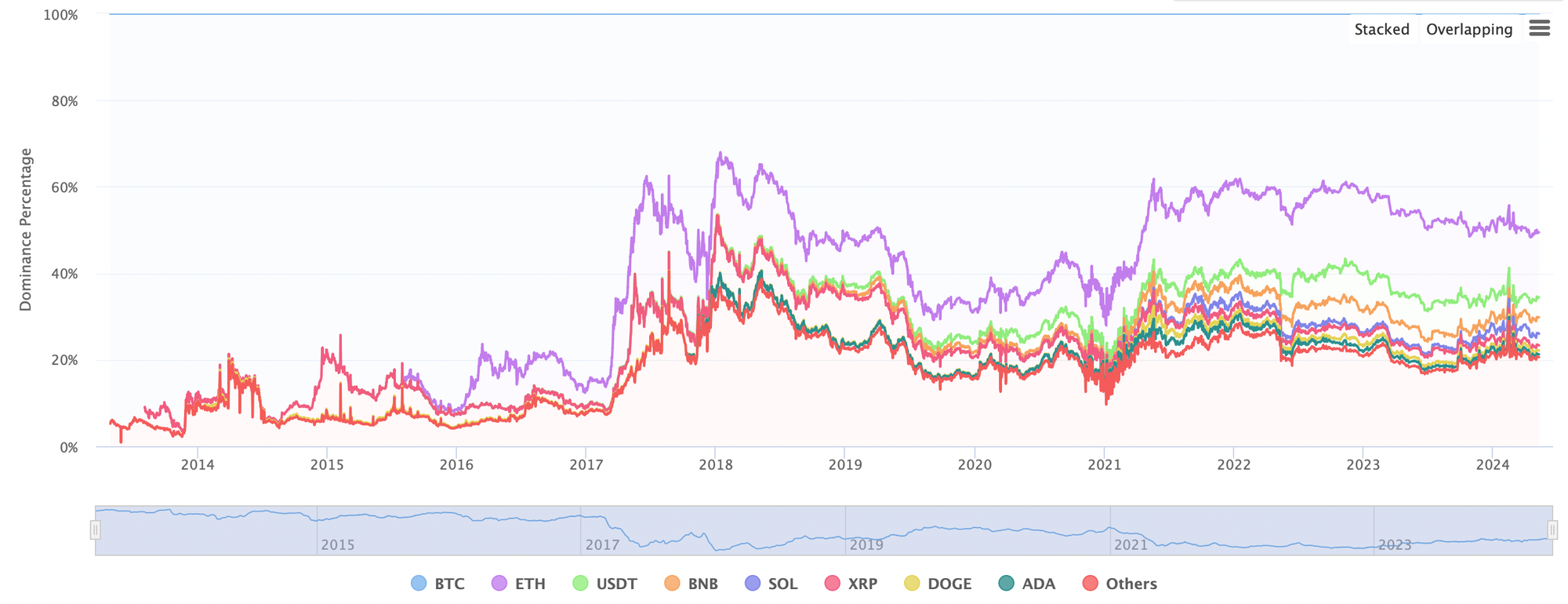Proof of Work vs. Proof of Stake: Crypto’s Eternal Debate
When it comes to understanding how cryptocurrencies actually work, few terms are more important than “Proof of Work” and “Proof of Stake”. Both refer to ways in which entirely-digital currencies are able to exist while staying decentralized. Many cryptocurrency developers and pundits have their own opinions on which method—if either—is best for creating a landscape that is able to sustain increased public interest.
This guide will explore the debate between Proof of Work and Proof of Stake by offering a simple explanation of how each system works, as well as their pros and cons. It is part of the series we've created to cover important crypto terms so that both experienced traders and complete beginners can better navigate the landscape.
What is Proof of Work?
Proof of Work (PoW) is a consensus mechanism that in fact predates the cryptocurrency movement. It was first conceptualized as a way to secure networks. After some earlier attempts to create a virtual currency using variations of PoW, a person or group known as “Satoshi Nakamoto” became the first to successfully do so when they published a white paper proposing a cryptocurrency back in 2008.
Within this white paper, Nakamoto outlined the first cryptocurrency of its kind: Bitcoin. To this day, Bitcoin is the term most often associated with Proof of Work. As the world’s first and largest cryptocurrency, Bitcoin’s ability to rely on PoW, rather than on banks or financial intermediaries, serves as quintessential proof that it is possible to store value and conduct trades on a global scale using this consensus mechanism.
If you’ve been following our previous guides, Proof of Work is directly related to cryptocurrency mining and hashrates. Mining is a multibillion-dollar industry in which the computing power of willing devices participate in a global network in order to verify transactions.
Whereas a centralized system may use a bank or financial services provider to vouch for the legitimacy of payments, decentralized systems that use Proof of Work instead let thousands of computers make thousands of guesses until one finds the answer to a complex equation—this is the "work" in question. The owner of the first device to get the right answer is financially rewarded in the form of both the block reward and all of the block’s transaction fees.

Pros
One of the key focuses in a Proof of Work system are democratization, as all network participants are treated equally by the network and the only major barrier to participating is being able to get your hands on a powerful mining rig and the power to run it. Security is also a crowning achievement: when there are many miners participating, PoW is a highly secure and relatively fair way to facilitate a peer-to-peer decentralized network.
Cons
There are, however, two core issues with Proof of Work that can make it unappealing to both crypto pundits and the broader public. By now, most people have seen the numerous headlines on mainstream outlets that claim crypto is bad for the environment. In actuality, the main contributor to this issue lies in Proof of Work itself. By having thousands of computers constantly make as many guesses as they can, PoW consumes a substantial amount of energy. In fact, according to a 2024 report by the U.S. Energy Information Administration, Bitcoin alone consumes as much energy as the entirety of Australia.
While ongoing efforts have seen PoW currencies lean towards using clean or otherwise wasted energy to facilitate cryptocurrency mining while reducing their carbon footprint, it remains a significant issue.
Proof of Work networks also face significant struggles with scaling in the sense that, while they are extremely robust up until a certain point, they tend to slow down in response to increased activity. Often, this results in Bitcoin’s transaction fees skyrocketing and transaction speeds slowing down during periods of time in which the public is particularly excited about crypto.
While some projects and proponents have pivoted into other consensus mechanisms such as Proof of Stake, others are developing scaling solutions that aim to keep the PoW system but improve its performance and lower its energy cost. We’ll cover popular scaling solutions in our next article.
What is Proof of Stake?
Proof of Stake (PoS) is currently crypto’s second most popular answer to the question “how do we keep a network secure without relying on third parties like banks?” It was introduced in 2012 by Scott Nadal and Sunny King as a solution to the issues that make Proof of Work unpalatable to many.
Proof of Stake is aptly named due to the fact that it assigns the job of validating blockchain transactions to participants who are able to prove that they have a stake in the network. Typically, this takes the form of PoS networks requiring that users who want to verify transactions first prove their commitment by locking away a minimum amount of a specific digital asset in storage. These users are known as “validators”, and the process of locking away their crypto is known as “staking”.
The stake that each validator must contribute is typically no insignificant sum, and often some or all of a stake is confiscated if a validator approves an invalid block of transactions or otherwise manipulates the network. Since validators have a significant financial stake locked away in the network, doing anything to attempt to compromise its integrity will negatively impact their own financial position as well. In other words, PoS appeals to the self-interest of its participants to keep the system in check.
In order to ensure this consensus mechanism is secure, each transaction randomly picks a validator whenever a block needs to be added to the blockchain. Regardless of how much money you stake in the system, there is no way to know when—or even if—your computer would be tasked with verifying a transaction.
Pros
The triumph of PoS lies in the fact that it requires substantially less computational resources than PoW in order to operate. This means that the network is able to better handle high levels of activity while still keeping transactions fast and fees low. Above all else, though, Proof of Stake is praised for its potential to defeat the energy consumption stigma that has become associated with cryptocurrencies.
Ethereum, the second largest cryptocurrency both by press and market cap, has switch from its Proof of Work model to Proof of Stake in September 2022. According to Investopedia, the switch cut Ethereum’s energy use by 99%. This effectively took it from using as much energy as some cities to being closer in nature to other popular online services.

Cons
Yet Proof of Stake also has its detractors. Some point out that gating the role of validators to only those who have enough money to place a stake in the network is a deviation from the idea of decentralized currencies as a democratized system of equals.
Other criticisms of PoS largely revolved around the fact that it has not been implemented on the same scale as Proof of Work for as long. We know from observing massively popular cryptocurrencies like Bitcoin that PoW is effective and robust, despite its significant faults. The move towards PoS, however, requires difficult implementation and stepping outside of the PoW comfort zone that many in the crypto community have become familiar with.
The future of consensus mechanisms
Clearly, both of these consensus mechanisms have distinct benefits as well as drawbacks when it comes to managing how a blockchain functions and who it tasks with keeping the network secure. Currently most major coins use Proof of Work, yet, as Ethereum moved towards a full Proof of Stake model and more PoS currencies gain popularity, we can increasingly observe how each system performs under the pressures of an increasingly popular world of crypto.
What's more, these two systems are only the most popular consensus mechanisms out there. Several other notable consensus mechanisms are gaining traction and entirely new solutions are constantly being developed in the still-nascent cryptocurrency industry. For now, both PoS and PoW have significant support and notable detractors. Both can coexist in the ecosystem, though it ultimately lies on users to decide which approach they support by engaging with the cryptocurrencies that are built around them.
So what's the smart solution as this important bit of crypto tech rolls on? Do your research then create a diverse portfolio of cryptocurrencies using Invity's Buy and Exchange features!